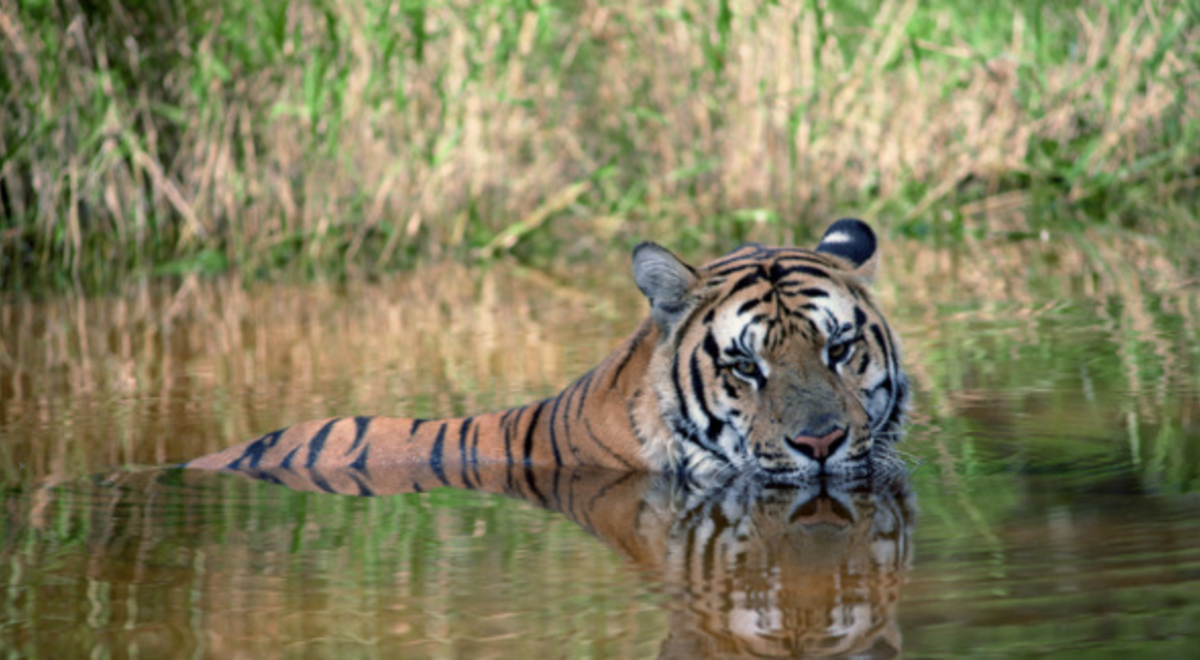According to WWF, approximately 3,200 tigers exist in the wild, and of those only 300 are Sumatran, 450 are Amur or Siberian tigers (the largest sub-species in size), and Bengal tigers number under 2,500, with Indochinese and Malayan tigers even rarer to spot.
Liz Bellward, ex-tiger handler and founder of Karma Cats, an Australian-based charity dedicated to raising funds to support animal conservation programs worldwide, says it’s important for travellers wanting to see tigers in the wild to do their research.
“Research the area and understand their economic, environmental and social challenges,” Liz says. “How does the tour or volunteer organisation benefit the animals, the environment and the local people?”
“Look for a tour with a focus on education and if you are volunteering with animals, ensure the organisation you are volunteering for offers training and support. Ethical organisations should be conducting interviews to ensure you are suitable for the role and making sure volunteer skills match the skills needed for the project.”
In honour of International Tiger Day, here’s where you can see tigers in the wild around the world and help protect and conserve their habitat.
A wild Bengal tiger family in Ranthambore National Park.
Best place to see wild tigers: Ranthambore National Park, Rajasthan, India
Just a few hours’ drive south of Delhi and 130km from Jaipur, Ranthambhore National Park is a great place to spot Bengal tigers as the big cats are used to tourist vehicles in this reserve. Set amid temples and Mughal ruins, the nature reserve is a mecca for wildlife spotters and photographers. The park uses 20-seat canter vehicles and six-seater jeeps for guided morning and evening safaris.
A 'swamp tiger' in the Sunderbans.
Sunderbans Tiger Reserve, West Bengal, India
One of the world’s largest tiger populations reside in the Sunderbans, a massive 140,000-hectare mangrove forest on the border of east India and Bangladesh. The World Heritage-listed site contains around 350 tigers and other endangered animals in this diverse and hard-to-access location. Visitors to the park can take a boat safari down myriad rivers to spot the elusive swimming tigers.
A Bengal tiger in Bandhavgarh National Park.
Bandhavgarh National Park, Madhya Pradesh, India
Another spot where you can spy Bengal tigers is Bandhavgarh National Park in central India, which is famous for its big cat population including leopards and jungle cats. Twice-daily wildlife safari excursions are run from Mahua Kothi, a resort located in the park. Tiger-spotting opportunities include elephant treks and four-wheel-drive safari vehicles through forests and woodlands.
The footprint of a Sumatran tiger in Kerinci Seblat National Park.
Kerinci Seblat National Park, Sumatra, Indonesia
Covering an area twice the size of Bali, the immense Kerinci Seblat National Park spans the coastal plains of West Sumatra in Indonesia. The Sumatran tiger population here numbers around 200 cats, with tourism seen as a way to aid its rainforest habitat and survival. Wild Sumatra Adventures leads ecotourism experiences where you may have a chance to spot a nocturnal tiger or its tracks.
The Amur or Siberian tiger has adapted to its harsh environment.
Zov Tigra National Park, Primorsky Krai, Russia
Meaning ‘roar of the tiger’, Zov Tigra National Park is located in Far East Russia, and was the first national park for the Siberian or Amur tiger. Around 10 tigers reside in the protected space, which covers a total of 200 hectares. Dedicated conservation tours allow visitors to follow the anti-poaching patrols through the mountainous forests, monitoring tiger behaviour and tracking cats.
Chitwan National Park is a protected area in Nepal for Bengal tigers.
Chitwan National Park, Chitwan, Nepal
This UNESCO World Heritage site and Nepal’s first national park is found in the Terai, a subtropical region of southern Nepal. Chitwan National Park is renowned for its Bengal tiger population, with around 200 wild cats. Tiger Tops lodges can facilitate a dusk jeep safari in the national park, which is the best time to spot the big cats hunting in the cooler times of the day.
More animal experiences. 12 Reasons Animals Are Photobomb Ninjas
Volunteering with orangutans in Borneo. Protecting orangutans in Borneo
But you don’t have to travel overseas to see tigers. In Queensland, Dreamworld on the Gold Coast and the Sunshine Coast’s Australia Zoo offer the opportunity to see Bengal and Sumatran tigers too.
“Don’t dismiss captive animal experiences to help protect animals in the wild,” adds Liz. “Many facilities like Dreamworld and Australia Zoo donate a percentage of all tiger interactions back to protecting tigers in the wild, but again, do your research.”
Australia Zoo Wildlife Warriors contribute to tiger conservation in Kerinci Seblat National Park and Dreamworld Wildlife Foundation makes donations to anti-poaching patrols and conservation initiatives in Russia and Indonesia.
india indonesia nepal russia












